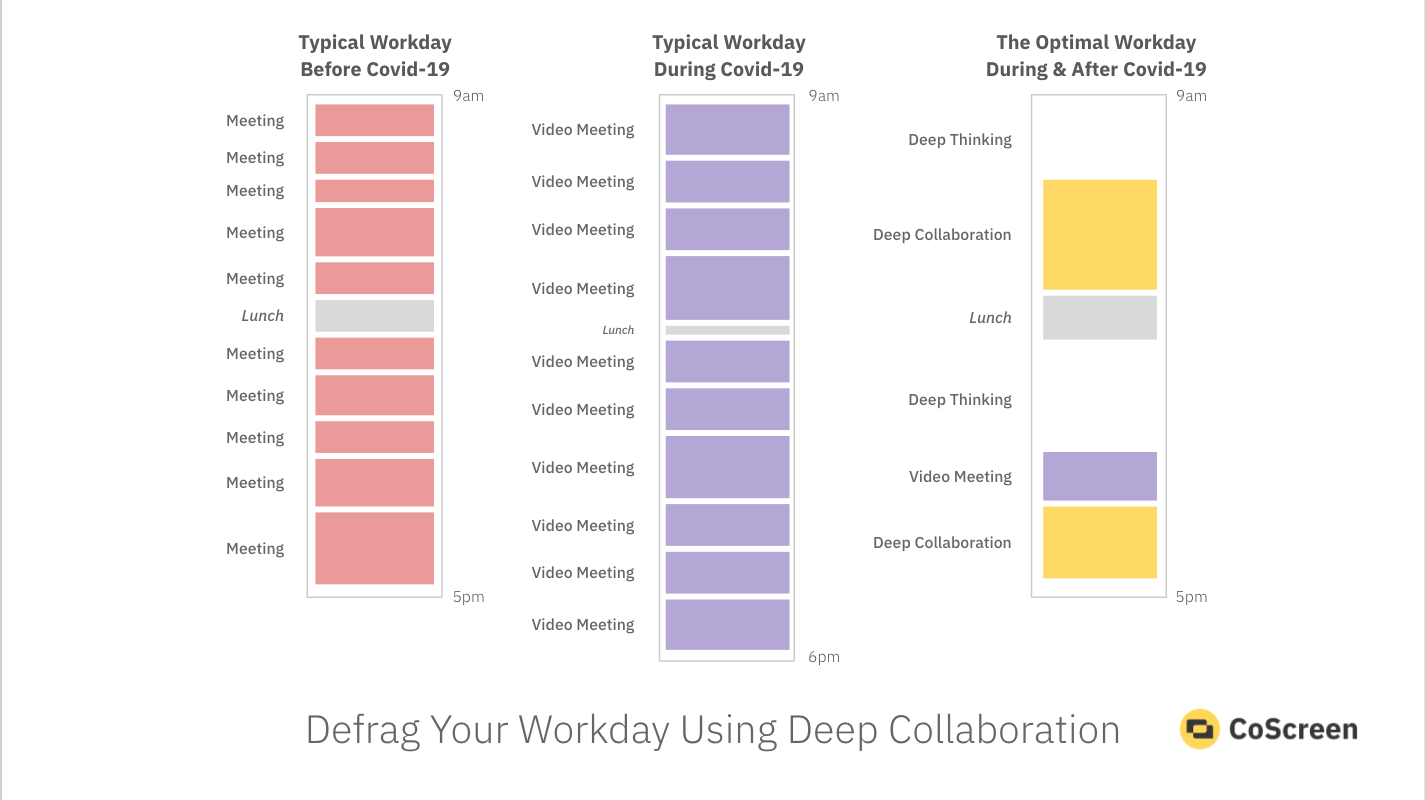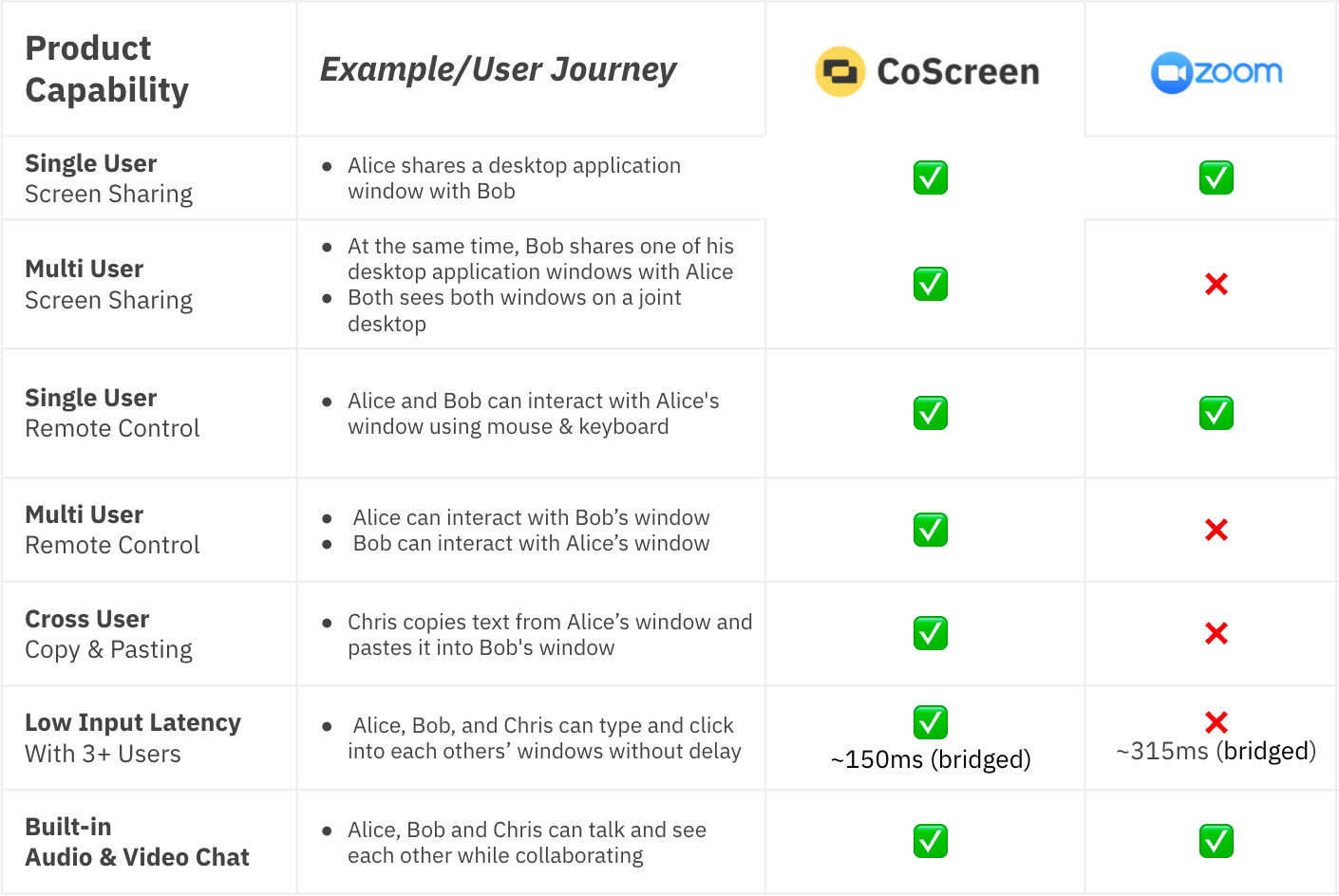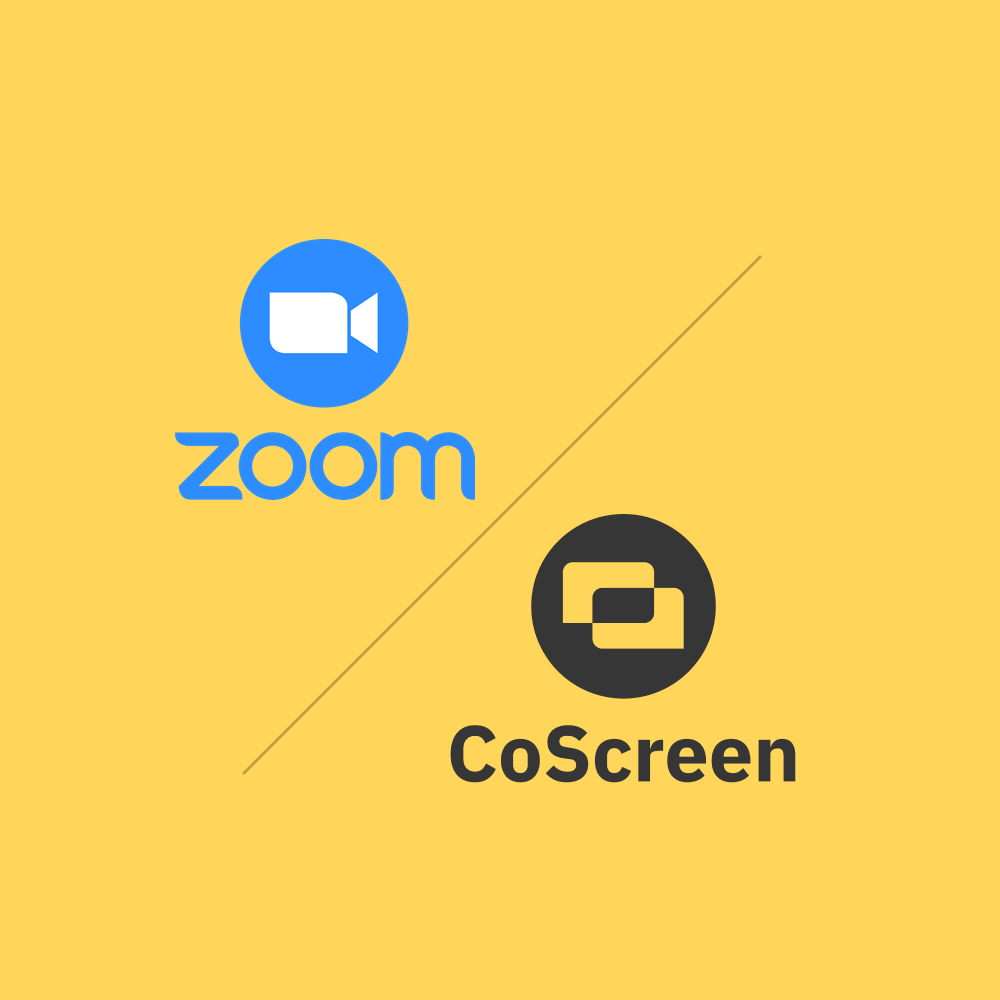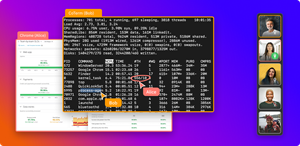Find out which collaboration mode is best for you, your team, and your specific use cases in this comparison of Zoom and CoScreen.
Zoom is an enterprise video communications solution that’s seen tremendous growth during the pandemic. It provides video conferencing services for up to 1,000 participants per session through its cloud-based platform and is used for team and company meetings, distance learning, and increasingly also for family gatherings.
CoScreen is a deep collaboration tool for agile teams with 2-10 members and highly optimized for interactive working sessions. It enables simultaneous, multi-user screen sharing and editing of shared windows on a joint desktop in addition to high-quality audio and video chat.
We probably all had time to come close and personal this past year with Zoom. Many of us have been relying on Zoom to talk to relatives and friends, conduct conference calls, remote team meetings, or 1-1 with colleagues.
Zoom has been here for a while as it was founded in 2011 and has been massively successful lately, but is it really the best choice for all use cases of remote work, especially when wanting to be productive and collaborative?
A Study by Dropbox and The Economist has shown that face-to-face meetings (in-office or remote) are the #1 distraction from productivity. Hence becoming highly productive requires something else. Additionally, according to The Psychiatric Times, the primary cause of Zoom Fatigue is caused by videoconferencing.
How are Zoom and CoScreen similar?
CoScreen and Zoom have some basic similarities even though they cater to different audiences but more on this later.
- Both solutions can be used for free to a large extent: 45 minutes per meeting in Zoom’s case with more than 2 participants, 60 minutes in CoScreen’s case.
- Single User Screen Sharing: both solutions allow you to present documents, websites, slides, or spreadsheets with your co-workers.
- Single User Remote Control - both solutions allow one user to take control of another participant's screen during a meeting.
- Audio & Video Chat - both solutions allow you to communicate with your co-workers via audio and video chat.

How are Zoom and CoScreen different
While both solutions enable remote work, they cater to fundamentally different use cases. Zoom was built to connect strangers and to chat, CoScreen was built to connect your team to get work done together.
- CoScreen prioritizes deep collaboration - highly interactive group work - for up to 8 team members, while Zoom excels for formal meetings with strangers and large group conference calls with up to 1,000 participants.
- In CoScreen, users can share and un-share windows in a highly intuitive manner for maximum security and privacy.
- CoScreen enables all participants real-time editing of any shared window for using mouse and keyboard.
- Collaborating via CoScreen is 2-3 faster in terms of input latency* compared to Zoom and even Microsoft Teams.
- CoScreen’s video chat feature only enables team members to see each other in small thumbnails to avoid Zoom fatigue and the feeling of being watched all the time.
"Company meetings, family gatherings, and school were all made possible thanks to Zoom. But, when it comes to working and getting things done, it's a shallow collaboration, and it is not semantic at all!
At this point, the main thing that Zoom can do for us is not to fail - Zoom transmits video and audio but nothing on a deeper level."
- John Lilly
When to use Zoom
Zoom is best when holding a large virtual meeting or HD video conferencing calls with people outside your team and for formal meetings.
- Presentation-focused meetings (e.g. sales calls).
- Meetings with strangers (e.g. if you meet for the first time).
- Large-group meetings (e.g. company all hands).
- Face-to-face discussions (personal 1:1)
When to use CoScreen
CoScreen is the best solution when working on a particular challenge collaboratively instead of just talking about it. It is optimized for teamwork that requires interactive exploration and iteration across multiple members.
CoScreen improves your teams' productivity and collaboration by instantly creating a shared context with unparalleled flexibility so you can get things done together up to 40% faster:
- Collaboration sessions where you need the power of two or more brains and pairs of hands to create something new (e.g. brainstorming, co-creation, co-design).
- Urgent meetings where you need to sort out a challenging problem together (e.g. a system outage, urgent customer request, time-critical delivery)
- Matters that require interactive, cross-functional alignment (e.g. handoff between frontend and backend engineers).
- Scenarios where you want to transition knowledge interactively (e.g. employee onboarding, customer onboarding, education, technical support).
A great example of use cases for CoScreen is engineering workflows. They often require the involvement of many diverse tools, roles, and frequent exchanges about complex matters. Being able to handle those interactively across multiple team members truly unlocks the benefits of Deep Collaboration.
Why CoScreen is a better alternative for agile teams collaboration
According to Marissa Shuffler, an associate professor at Clemson University: “When you're on a video conference, you know everybody's looking at you; you are on stage, so there comes the social pressure and feeling like you need to perform. Being performative is nerve-wracking and more stressful”.
Meetings have been a bone-in-the-throat for most agile teams. We know all too well that during conventional meetings, we often focus more on talking about a problem than solving it. Yet, Zoom has its place for certain types of meetings. But adding CoScreen to the mix for interactive, small-group collaborative sessions while working remotely can be even better than working together in person.

Learn more:
- How Grid AI uses CoScreen to build software 2x faster together
- How to onboard new remote engineers with 30% less friction using CoScreen
Experience deep collaboration with CoScreen.






